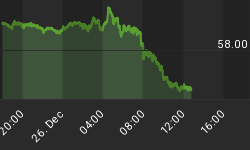Everything Old Is New Again

In a 1991 episode of Seinfeld, as Kramer pleaded with Jerry to install illegal cable he uttered:
Man, it's the 90s. It's Hammer Time!
Some analysts on Wall Street are drawing similarities to the 1990s, a period marked by extraordinary returns in the stock market and M.C. Hammer's moment in the sun. From Bloomberg Business Week:
Early in 1992, Time magazine projected that the nascent economic recovery would be "one of the slowest in history and the next decade one of lowered expectations." That was the conventional wisdom and, at the time, seemed eminently reasonable. It also turned out to be completely wrong. The Internet and huge productivity gains propelled above-average economic growth and a rip-roaring, "Cult of Equity" bull market that surged into the year 2000.
In a recent research note, Schwab's Liz Ann Sonders pointed out numerous similarities between today's market environment and the mid-1990s, including:
- Post-financial crisis period (S&L crisis then, housing crisis now)
- Slow, "jobless" economic recovery
- Similar stage within economic cycle
- Extremely easy monetary policy, but "normalization" beginning
- Low inflation
- Today's eurozone = 1990s Japan
- Government shutdowns (1995-1996 and 2013)
- Midterm election year (1994 and 2014)
- Rapidly improving federal budget deficit
- Minimum wage hike
- Technology revolution
- Rising valuations from depressed levels
- US market outperforming emerging markets
- Record-high margin debt levels
- Rising volatility
- Increasing equity mutual fund inflows
The Glass Is Half Full

In recent weeks, we have outlined our present day concerns about an indecisive and increasingly vulnerable stock market. In today's analysis, we will assume the 1990 similarities are relevant.
Can we find evidence to support the possibility of better than expected stock returns in the next 3-5 years? As we have noted in the past, markets are a polling mechanism. When the aggregate response to the future economic outcomes poll is bullish, stocks tend to rise. Conversely, when the aggregate response is bearish, stocks tend to fall. Therefore, we learned something about the health of the economy when the S&P 500 failed to make a new high in 2000 near point A in the chart below. The reversal near a similar point in October 2007 (see A1 below) foreshadowed economic trouble. With the S&P 500 plowing through the previous points of selling resistance, the right side of the chart paints a much more optimistic view of future economic outcomes. Therefore, it is possible to find some present day evidence to align with the "Hammer Time" theory.

Investment Implications - Keep All Scenarios On The Table
Should we invest based on a 1990s analogy? No, but the analogy helps us keep an open mind about better than expected outcomes in the stock market over the next few years, which is just as important as keeping an open mind relative to worse than expected outcomes. Markets are complex systems with countless moving parts. As outlined in The Best 2014 Investment Advice, we can increase our odds of success by leveraging the concepts described by John Henry of John W. Henry & Company:
"If you take emotion - would be, could be, should be - out of it, and look at what is, and quantify it, I think you have a big advantage over most human beings."
What "is" at the present time? We have a bullish, yet more vulnerable, profile for equities. As long as the S&P 500 holds support near 1,844 and the 50-day reflects a bullish economic bias (see chart), we will continue to err on the side of holding U.S. stocks (SPY), rather than more conservative assets, such as bonds (AGG) or currencies (UUP). Since flexibility is a core tenet of success, we will monitor the incoming data and adjust as needed.
















